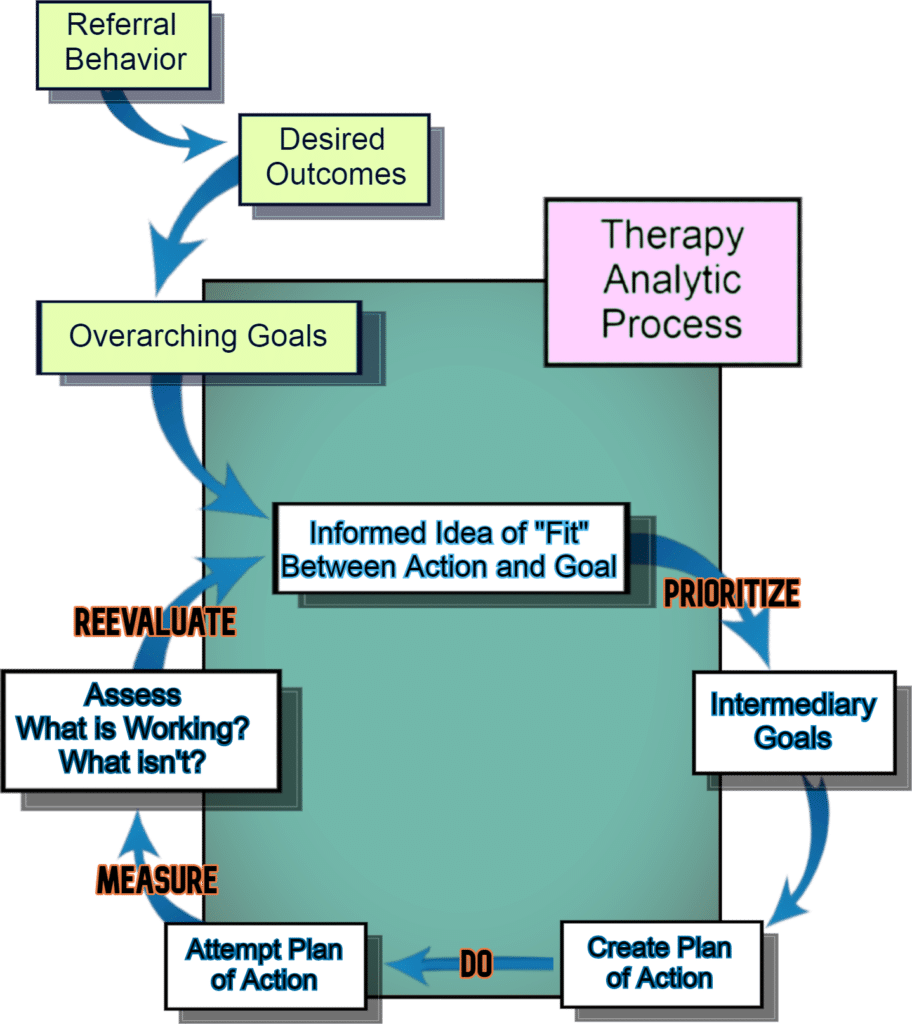For Your Edification Series #2 Is My Therapist Helping Me?
Chapter 2: Camel Therapy
So now, we are going to focus on the top part of that: (1) Referral Behaviors, (2) Desired Outcomes and (3) Overarching Goals. Then in the next Chapter we will go into the bottom half (the actual Do Loop itself) in detail.
By coming into Therapy for your first session, you have already made a change: you are seeking treatment. So what made you decide to do that? The camel’s back is broken by all the straw and now your taking it to a veterinarian to come fix it. Those final straws that hit right before the camel’s back broke are called REFERRAL BEHAVIORS. Maybe you referred yourself to therapy because you just couldn’t take living this way anymore. Maybe you came to work drunk and got disciplinary action taken against you. Maybe a judge told you either you go to therapy or you go to prison. It doesn’t matter what it is, now something in your life has to change in order for you to have the life you want.

Therapy at it’s foundation is about CHANGE. You come to therapy (willingly or unwillingly) because something in your life has to be different. So what needs to be different in your life? What would you like to be different compared to where you are now? What that look like? Maybe you will no longer struggle with depression and be able to do the things that make you happy again. Maybe you will have a steady jobs. So once we fixed the camels back, what are you going to do with the camel? Go to mexico with it? Pet it and have a good time? Use it for your business to transport goods (which is what camels were originally used for)? These things are the DESIRED OUTCOMES. They are discovered during a conversation between you and your therapist. Desired outcomes are very important because that’s the only way we know that therapy has worked. Therapy worked when we see desired outcomes become a reality and not just a fantasy.
Okay we have “Point A” (Referral Behaviors) and Point B (Desired Outcomes), so how do we get from Point A to Point B. Where is the Camel’s back broken? A Camel has 539 bones according to this some guy on the internet. So what do we do to fix this dang ol’ Camel? Where to start? You and your therapists decide on OVERARCHING GOALS as part of a plan to fix your busted up camel hump. So you felt humiliated after having a panic attack at a fancy dinner party (Referral Behaviors) and you want to be able to leave the house and live a normal life without constan(Desired Outcome), so now the goal is to decrease your anxiety using specific treatment strategies (eg. CBT Techinques or whatever it is you and your therapist decide will likely help).
Now you are ready to get into the nitty-gritty of the Therapist DO LOOP! Covered in the next Chapter in this Series.


